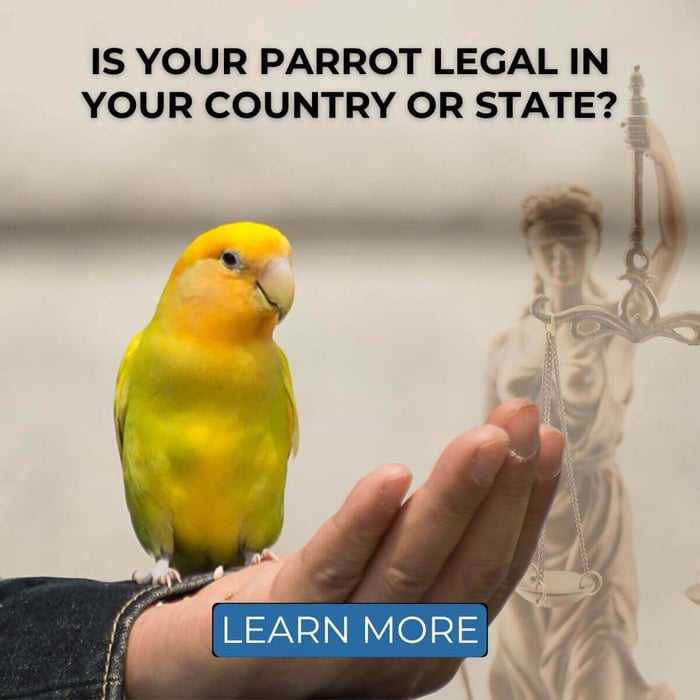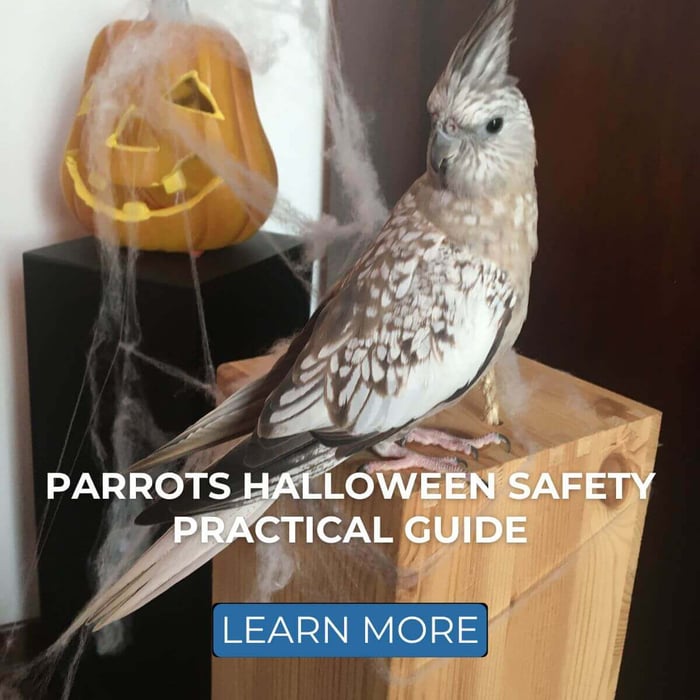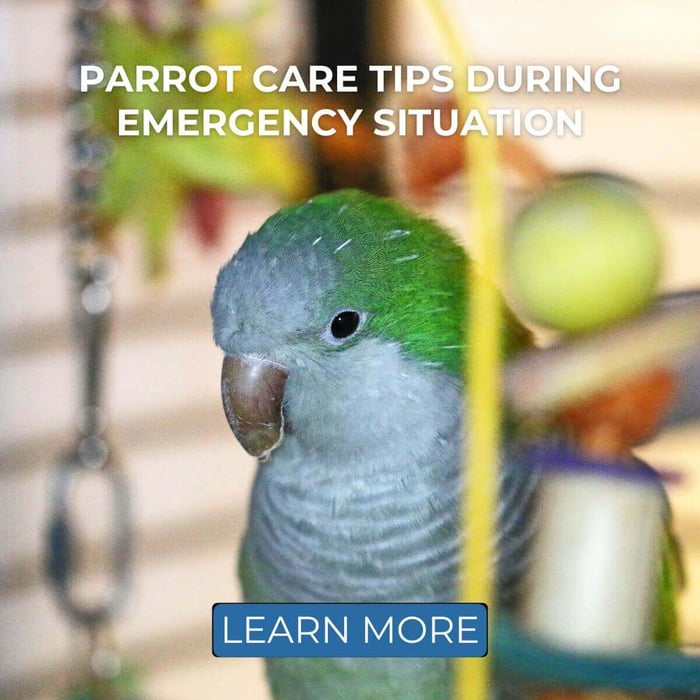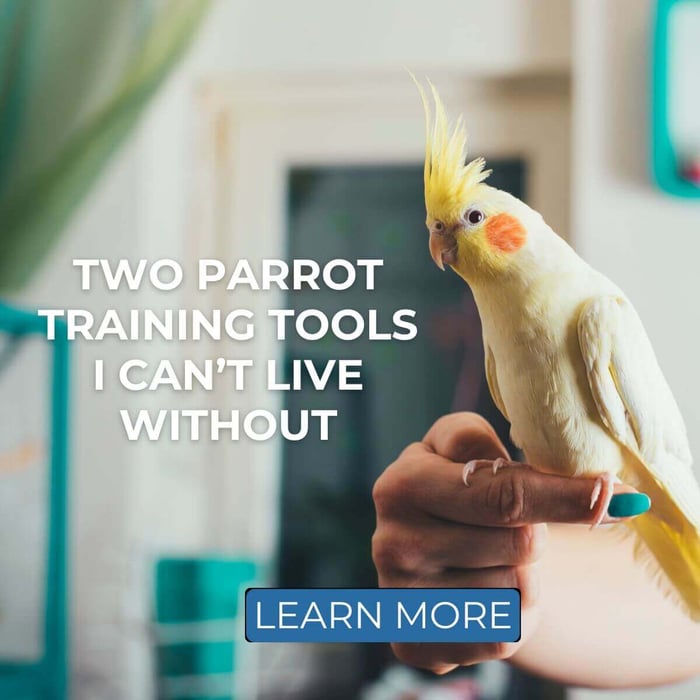8 Ways to Introduce a Parrot to New Food
Looking to diversify your pet parrot’s diet? Great! Giving your feathered pet the opportunity to sample all sorts of different foods is a great way to offer more enrichment while also making sure it gets all the nutrients it needs. But what if your bird isn’t having it? Parrots who aren’t used to eating a varied diet will often refuse to eat new things or even be scared of unknown foods. Don’t give up too easily! Here are 8 of our tried & tested ways to introduce a parrot to new food.
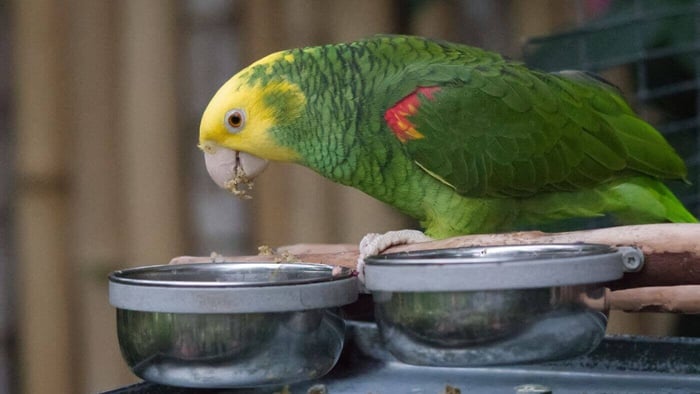
Why Should You Introduce a Parrot to New Foods?
Although an all-seed diet used to be the standard for parrot nutrition, it has long since become clear that our feathered pets need a little more variety to thrive. As discussed in our article on the parrot diet, formulated parrot pellets actually make for a better staple than dry seeds in most cases, as they’re more nutritious and lower in fat. If your parrot isn’t on a pelleted diet yet, it’s a good idea to at least introduce them into its diet for better long-term health.
Pellets aren’t the only thing your parrot should be eating, though. You should also be offering plenty of fresh produce, especially vegetables. This ensures it gets all the (micro)nutrients it eats to thrive, and since vegetables are low in fat and sugars, it also helps prevent obesity.
I know that some parrot owners will be scratching their heads by now. How in the world do you go about introducing a parrot to new food? Many of our birds were raised on a singular diet and won’t even recognize new items as food, let alone be willing to sample them. Sometimes, they’ll actually be scared of anything new!
To help your bird accept a healthier and more varied diet, we’ve put together 8 of our tried and tested tips. It can be a frustrating process that may take months, but please don’t give up. It’s a small price to pay for a longer lifespan and less health issues for your bird.
Let’s dive right in and get those parrots eating healthy!
1. Use A Familiar Container
If you’re trying to get your parrot to accept a new food, it can help to present it in its normal food bowl. Otherwise, birds that aren’t used to a variety of foods may not even recognize that this new item is edible!
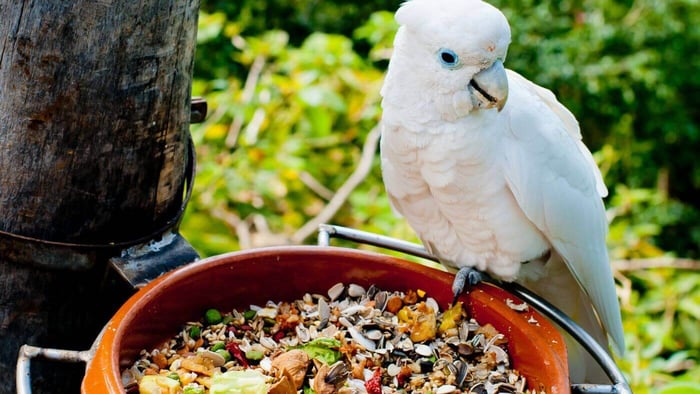
2. Mix New Food With Old Food
Another classic trick for introduce a parrot to new food is to mix the new with the old. If your bird is a seed fiend, mix pellets or veggies with its seeds.
The most likely result at first is that it will pick out the bits it likes with surgical precision but keep it up. Eventually, your parrot will most likely get tired of avoiding the new food and just give it a try.
3. Pretend To Eat Food
Parrots are huge social learners. If you have another parrot that your picky eater gets along with, and that other parrot does eat new foods, you’re golden. All you have to do is let the picky eater watch, and in most cases, it’ll want to see what all the fuss is about. Long-time parrot owners will know that jealousy is a huge motivating force in our birds!
Unfortunately, the aforementioned is usually not the case, but that doesn’t mean you can’t still employ the social learning principle. After all, you’re part of the flock, too. (Pretend to) eat the new food with exaggerated gusto.
If your parrot shows any interest, maybe even employ the reverse psychology principle and deny it a taste at first. Regular food thieves know that the items they’re not allowed to eat are the tastiest. Eventually, you can let it ‘steal’ a piece.
4. Add A Mirror
Another way to leverage the social learning principle to your advantage is to use a mirror. I’ve had mixed success with this one, but I think it’s worth a try. Basically, I place the mirror right behind the food bowl.
When the bird walks up to take a look, it’ll see “another bird” hanging around the food. If it leans into the sample, the other bird will as well. And hey, if that other guy is interested in this food, then your parrot may be more willing to give it a try as well!
Tip: This trick also sometimes works when trying to get parrots to take a bath. Place a small mirror inside the bathing dish, and the presence of “another parrot” can help put your bird at ease.
5. Try Different Preparations
Parrots are a bit like humans in that they definitely show preferences for foods prepared in one way over the other. Try preparing new meals in different ways, and you may be able to tempt your bird to give it a shot. For example:
- Mash fruits and veggies like banana or cooked sweet potato
- Serve foods cold or lukewarm
- Chop foods finely or leave them whole
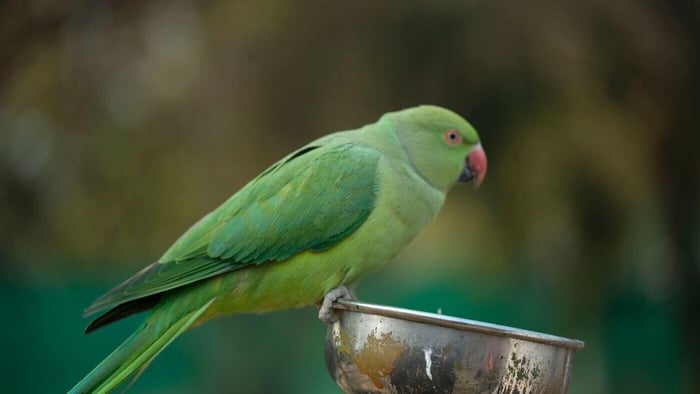
6. Offer New Foods In The Morning
Not only will your parrot be hungry in the early morning, but this is also the time most parrot species naturally go out to forage. All around, it is a good time to introduce a parrot to new food.
With a bit of luck, your parrot will be in such a “feeding mood” that it’ll sample things it would normally find suspicious. And hey, it might even like it.
7. Mix Food And Toys
If your parrot likes to play, which most do, you can mix food and toys. For example, you can tack a piece of veg onto a normal hanging chew toy. Or hide the new food inside a foraging toy to make it seem more exciting!
Other popular “food-‘n-play” options include hanging food kabobs, placing wet lettuce in the cage (many parrots use it to bathe) and mixing food with toys in a foraging box.
8. Give Lots Of Praise
If your parrot shows interest in new foods or even has a bite, be sure to praise it. This is supposed to be a positive experience for your bird, so make sure it is.
Verbal praise, head scratches and maybe even one of its favourite treats at the end are all ways to make sure it’ll want to try new foods again the next time you want to introduce something into its diet.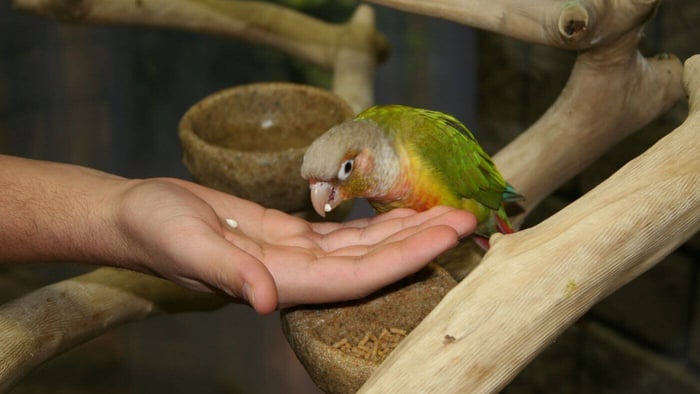
How To Introduce A Parrot To New Food: Conclusion
It’s possible to introduce a parrot to new food, even if it’s been eating the same thing all its life. It’s just not always a quick process! Hopefully, with these handy tricks, you’ll be able to eventually tempt your parrot into expanding its palate a little.
Further Support
Join our Facebook Group for more support and handy tips on caring for pet parrots: https://www.facebook.com/groups/ParrotEssentials.co.uk

